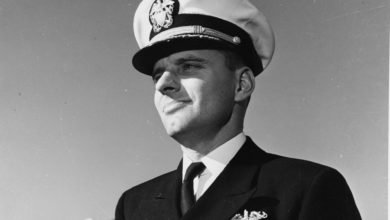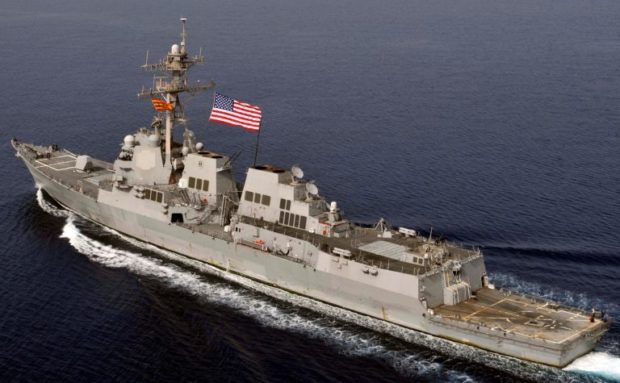Medal of Honor Monday: Army Maj. Samuel Woodfill
Army Maj. Samuel Woodfill was one of the most decorated soldiers of World War I. He was a modest man who was known for his excellent marksmanship, but it was his bravery in taking out several machine gun nests during a 1918 battle that earned him fame and the Medal of Honor.
Woodfill was born Jan. 6, 1883, near Madison, Indiana. Growing up in a rural area, he watched his father — a Mexican-American and Civil War vet — and older brothers hunt. At first, he was too young to go with them, but by age 10, he started sneaking a gun out of the house to shoot small game. The Indiana Historical Bureau said Woodfill’s father was impressed when he found out. Instead of punishing the boy, Woodfill’s father let him hunt whenever he wanted.
Woodfill tried to join the military when he was 15 so he could fight in the Spanish-American War, but he was turned down. He waited a few more years and was finally accepted into the Army when he turned 18 in 1901. Woodfill was shipped to the Philippines to serve until about 1904 when he volunteered for duty in Alaska. That’s where he honed his marksmanship skills, hunting large game in the untamed wilderness.
After Alaska, Woodfill served for about two years at Fort Thomas, Kentucky, before being sent to Texas to defend the Mexican border. He returned to Fort Thomas in 1917 and became an officer after being promoted to second lieutenant.
By then, the war in Europe had escalated, so it was pretty clear the U.S. would soon be joining the fight. As Woodfill prepared to deploy with the American Expeditionary Forces, he married his longtime girlfriend, Lorena Wiltshire.
In the fall of 1918, Woodfill and thousands of other American soldiers were sent to France, just as the six-week-long Meuse-Argonne battle was unfolding. Woodfill was quickly promoted to first lieutenant. He was just outside the town of Cunel with his unit, the 60th Infantry, when he went on a sharpshooting tear that is comparable to the exploits of his fellow war hero, the famed Army Sgt. Alvin York.
It was Oct. 12, 1918, and Woodfill was advancing with Company M when they came under heavy attack. Since he was in charge of the unit, Woodfill told most of the men to hang back. He and two other soldiers went ahead to find and knock out any enemy machine gun nests.
When they got near the village, Woodfill’s keen eye noticed muzzle flashes coming from a church tower about 300 yards away. According to a curator at the Fort Polk Museum, he aimed his rifle toward where the gunner’s head would be — he couldn’t actually see the person — and fired. The gunner dropped dead.
Woodfill repeated that process four more times as new gunners tried to take charge of the unmanned machine gun. He only had five shots in his rifle, and he took out all five gunners who tried. According to his Medal of Honor citation, another enemy soldier charged Woodfill, but Woodfill killed the man with his pistol after a hand-to-hand fight.
Turning his sights to a potential gun nest at a stable, Woodfill let off another shot. That machine gun never fired again.
A short distance later, Woodfill crawled into range of a third machine gun nest. At first he took cover in a shell hole, but he got hit with the remains of mustard gas that lingered there, so he made his way to a ditch about 40 yards from the enemy gun, according to the Fort Polk Museum curator. He took out another gunner and the four replacements with his rifle before using his pistol to kill two more men.
After shooting a German sniper out of a tree, Woodfill called on the two soldiers with him to rush a fourth machine gun nest. Woodfill killed five of its crew and injured three others, who were taken prisoner.
A few minutes later, a fifth machine gun nest came into view. Woodfill charged this one, too, killing five men on one machine gun before jumping into the pit for cover.
According to his citation, two other enemy soldiers turned their guns on him. When Woodfill wasn’t able to shoot, he grabbed a nearby pickaxe and killed them.
Thanks to his actions, Company M was able to push on to their objective.
Woodfill was evacuated from the battlefield and spent 10 weeks in a hospital recovering from the debilitating effects of the mustard gas.
On Feb 9, 1919, famed Army Gen. John Pershing presented Woodfill with the Medal of Honor and promoted him to captain. Pershing praised Woodfill for fighting and not just occupying trenches for months on end.
Woodfill returned to Kentucky and left the Army in November 1919, but he found he wasn’t quite prepared to reenter civilian life, so he rejoined three weeks later. He had to rejoin as a sergeant, meaning he lost the captain’s rank he’d earned during the war. But according to the Indiana Historical Bureau, he didn’t mind. However, when the public learned that the war hero had lost his rank, efforts to appeal the decision were made. They went nowhere.
On Nov. 11, 1921, the Tomb of the Unknown Soldier was dedicated in Arlington National Cemetery. Eight highly decorated WWI veterans handpicked by Pershing escorted the soldier to the burial grounds, and Woodfill was one of them.
Woodfill retired from the Army again in 1923, with a pension, but a few years into the Great Depression, he and his wife were struggling. A petition to get the pension increased was denied by Congress.
Woodfill’s wife died in the early days of World War II, so when the Army recalled him to service in 1942, he went, the Indiana Historical Bureau said. He was given special clearance to serve and, at 59, was still an excellent marksman. But he hit the mandatory retirement age of 60 in 1943, so his third bout of service was short-lived.
When he again returned to civilian life, he settled back in his home state of Indiana, where he lived until he died on Aug. 10, 1951.
Woodfill was initially buried in a local cemetery, but his body was reinterred at Arlington National Cemetery in 1955. His final resting place is beside Pershing, who, according to the Indiana Historical Bureau, once referred to Woodfill as “the greatest single hero in the American Forces.”
This article is part of a weekly series called “Medal of Honor Monday,” in which we highlight one of the more than 3,500 Medal of Honor recipients who have earned the U.S. military’s highest medal for valor.
Source: Department of Defense
Content created by Conservative Daily News is available for re-publication without charge under the Creative Commons license. Visit our syndication page for details.



